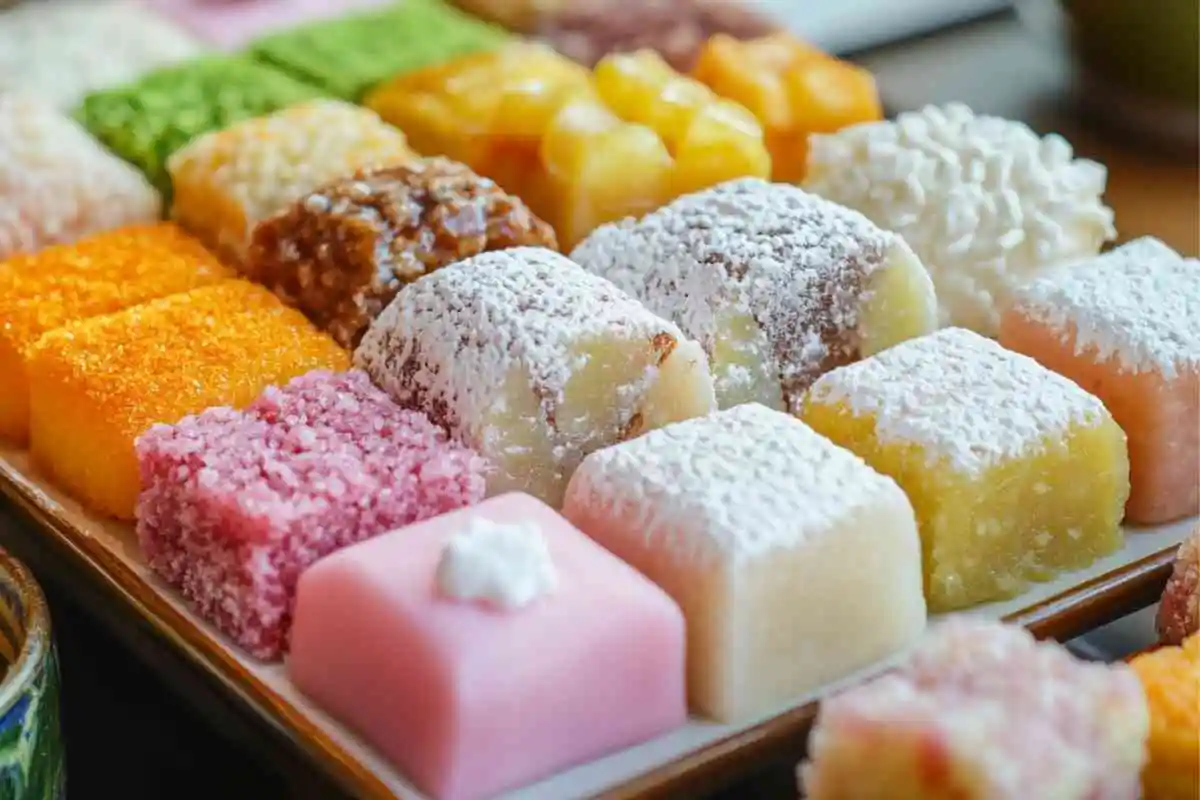Have you ever tried mango sticky rice? It's the top dessert in Asia and shows the diverse tastes and textures in Asian sweets. If you love desserts, you're about to start a food journey. This journey will excite your taste buds with amazing dessert recipes!
This guide will help you explore different Asian Desserts. You'll read about the famous Filipino mango float and the chewy mochi ice cream.
You'll see traditional desserts with new twists. Each dessert has a story that connects to its culture. Don't miss out on these treats that reflect the culinary traditions of various places.
Imagine making these yummy desserts yourself. Maybe you want to try the creamy coffee & cream agar jelly from Thailand, or Korean hotteok that's crispy and sweet.
This guide is here to inspire you and fulfill your love for desserts. So, put on your apron and let's explore the amazing world of Asian Desserts together!
Exploring the Vibrant World of Asian Desserts
Start a journey into the exciting world of Asian desserts.
Here, you’ll find a mix of flavors and textures like no other.
Enjoy creamy coconut treats, chewy mochi, and more, each reflecting Asia's culinary wealth. These desserts are not just food; they're a big part of cultural celebrations too.
In the rice pudding variety, you'll see the region's culinary range. Thailand's jasmine rice pudding, Indonesia's bubur ketan hitam, and India's kheer bring out unique tastes.
Mochi from Japan adds chewiness and rich flavors. Bubble tea mixes creamy milk tea and tapioca pearls, loved by many.
Sweet sticky rice desserts, with fresh mango in Thailand or lychee in China and Vietnam, offer a great sweet and fresh taste mix. Fried bananas and coconut treats show Southeast Asia's love for sweet, creamy, and crunchy food.
Don’t miss shaved ice treats like Korea’s bingsu. It combines shaved ice, sweetened milk, and toppings like red bean and fruits. Asian desserts bring a world of flavors to try, making every bite an adventure.
A Delightful Journey Through Flavors and Textures
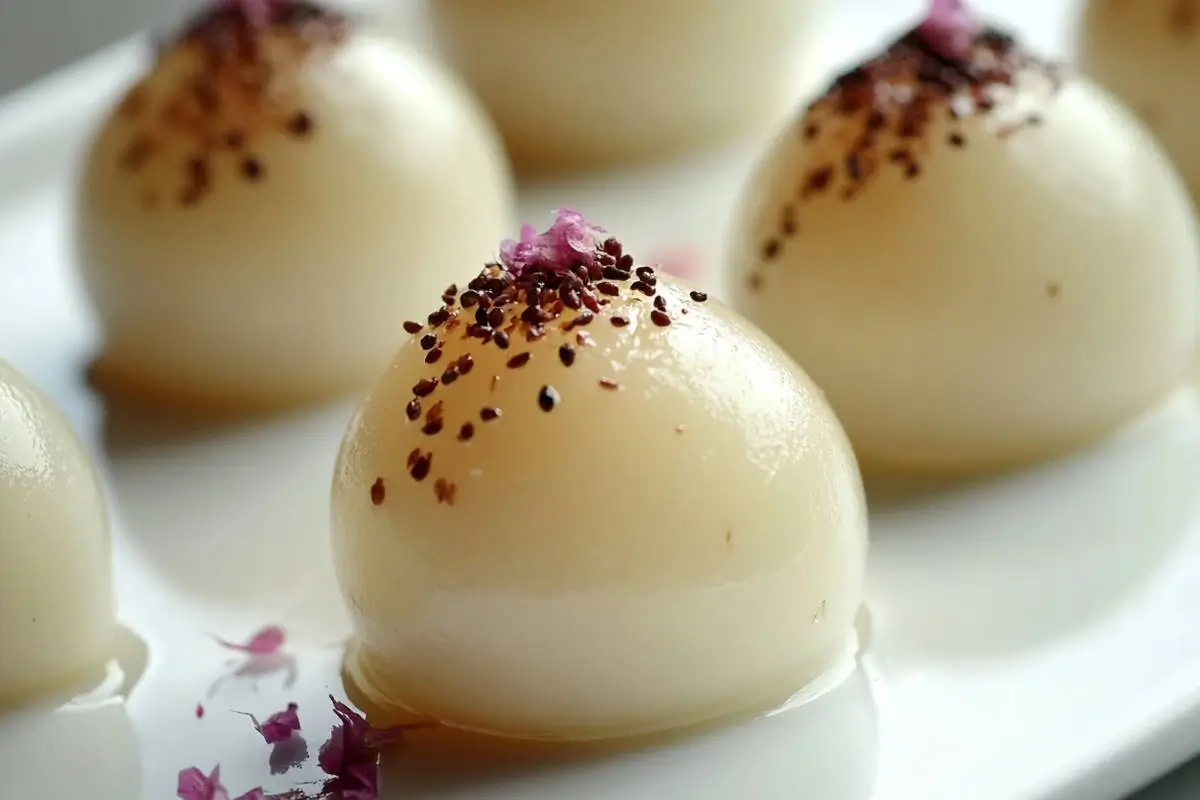
Asian desserts are a colorful mix of flavors and textures. They make your taste buds happy with every bite.
Think of the silky mango pudding that smoothly slips down your throat. Or the chewy joy of mochi that gives a fun eating feeling. The crisp of shaved ice is perfect for hot days and celebrations.
These treats tell the rich stories of where they come from. Desserts from Japan, Taiwan, and the Philippines show Asia's wide food variety.
You will find exciting mixes of tropical fruits. They use old-school ingredients in new ways. This mixes ancient cooking ways with fresh dessert ideas.
Let's dive into the health side of Asian desserts:
Dessert | Calories | Protein(g) | Fat (g) | Carbohydrates (g) | Prep Time |
|---|---|---|---|---|---|
Mango Sticky Rice | 250 | 4 | 8 | 40 | 50 |
Strawberry Mochi | 180 | 2 | 9 | 30 | 45 |
Mango Sago | 220 | 3 | 7 | 35 | 20 |
Ube Cake | 350 | 6 | 20 | 40 | 90 |
This variety of desserts shows the spirit of Asian cookery. Trying these creative sweets lets you enjoy Asia's deep dessert traditions. It's an inspiration and joy for food lovers everywhere.
Cultural Significance of Sweet Treats in Asia
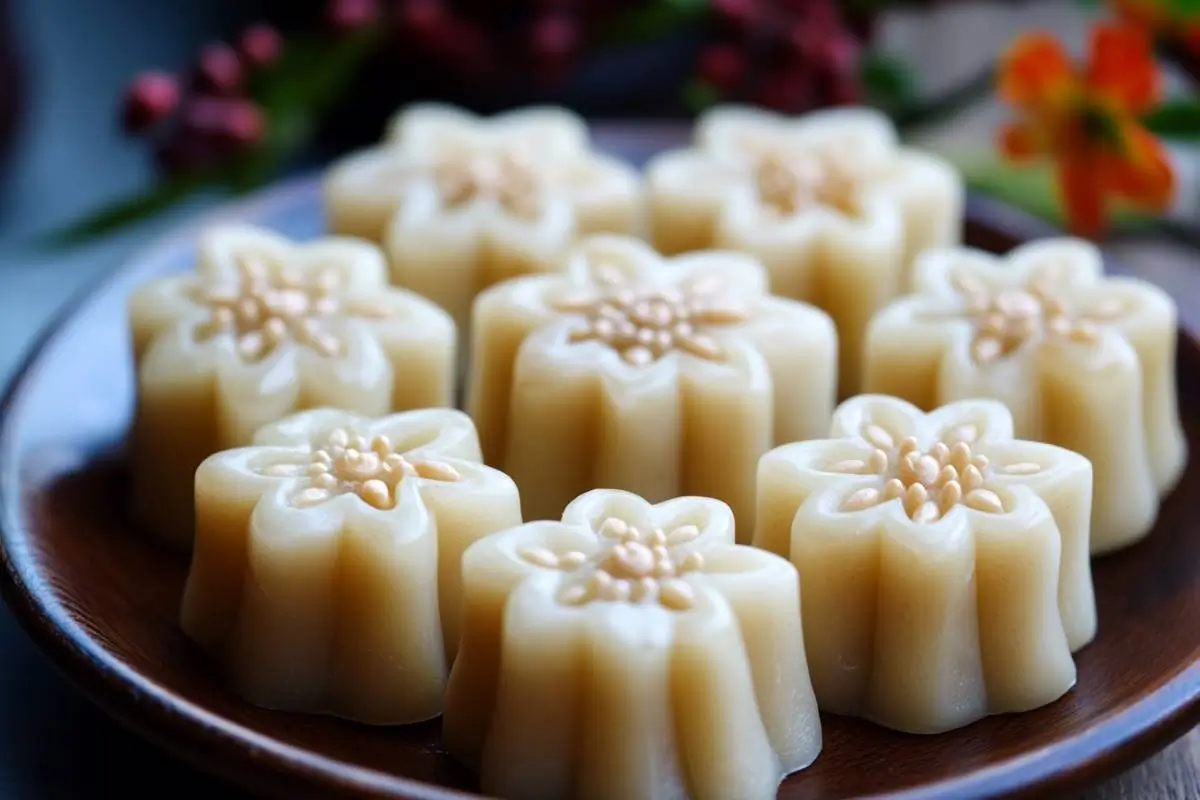
Asian desserts mean a lot more than just sweet flavors. They are key to Asian food traditions and connect generations with culture and celebration.
Mooncakes are a must-have during China's Mid-Autumn Festival. They symbolize togetherness and come filled with tasty pastes. Sharing them strengthens the festive bond, making them essential to the festivities.
In India, rasmalai is a favorite during festivals like Holi and Diwali. It stands for joy and is shared to show a sense of unity.
Vietnam’s Ché shows the diversity of the country's sweets, often coconut milk-based. They showcase local tastes, strengthening the country's culinary identity.
In the Philippines, halo-halo offers cooling relief and social joy in the summer. It's a mix of beans, fruits, and ice, perfect for sharing.
Indonesian pisang goreng is a beloved snack, featuring bananas in crispy batter. It's a favorite at events, celebrating local cuisine.
Thai mango sticky rice is sought after during celebrations. Its combination of mango, sticky rice, and coconut cream unites people with its taste.
Plum wines in Japan, Korea, and China also hold a special place. Japan's umeshu, with its unique flavor, is often enjoyed with sweets.
The Philippines’ hopia and Vietnam's coffee buns add to the diverse dessert culture. These aren't just treats; they're memories and cultural icons that bring people together.
Popular Asian Desserts
Exploring popular Asian desserts is an adventure in taste and tradition. These sweets draw on a deep cultural history, offering a window into the varied cuisines of Asia.
You'll come across treats like chewy mochi and smooth mango pudding. These desserts blend rich flavors with history, evolving from traditional forms to exciting, modern twists.
Flavor Profiles and Textures
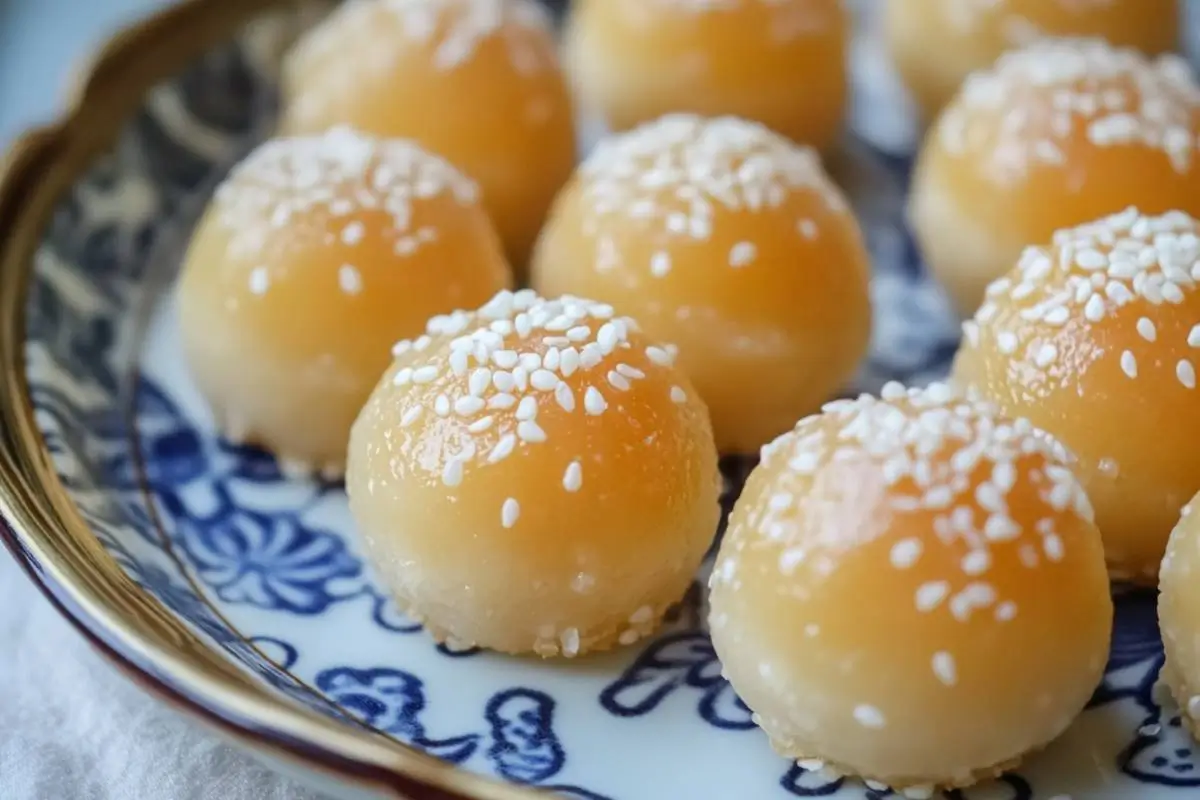
Asian desserts bring together unique tastes and textures. Take mango pudding, for example. It's smooth, creamy, and has a refreshing sweetness that's great for summer.
Then there's strawberry mochi. It has a chewy exterior with a sweet strawberry filling inside.
And don't forget sesame balls—crispy on the outside with a sweet, nutty filling.
Let's review some popular Asian desserts and what makes them special:
Dessert | Flavor Profile | Texture |
|---|---|---|
Mango Sticky Rice | 320 kcal | Chewy and soft |
Protein | 5 g | Fluffy and moist |
Fat | 18 g | Crispy yet chewy |
Saturated Fat | 8 g | Crispy and warm |
Rice pudding is loved in many Asian cultures for its creamy sweetness. It often ends meals or marks celebrations. Let's look at how this dessert varies across Asia, showcasing unique tastes and traditions.
Regional Variations
In Asia, each place has its own spin on rice pudding. Despite all having rice and milk, local touches make each version special:
Key Ingredients
Rice pudding's charm comes from a few key ingredients. Here's what makes each bite so good:
Ingredient | Purpose |
|---|---|
Rice | It's the main part, giving the pudding texture. |
Milk | Makes the dish creamy and rich. Whole milk is best for a classic taste. |
Sugar | It sweetens the pudding, making it extra comforting. |
Dried Fruits & Nuts | They add flavors and textures, making every spoonful interesting. |
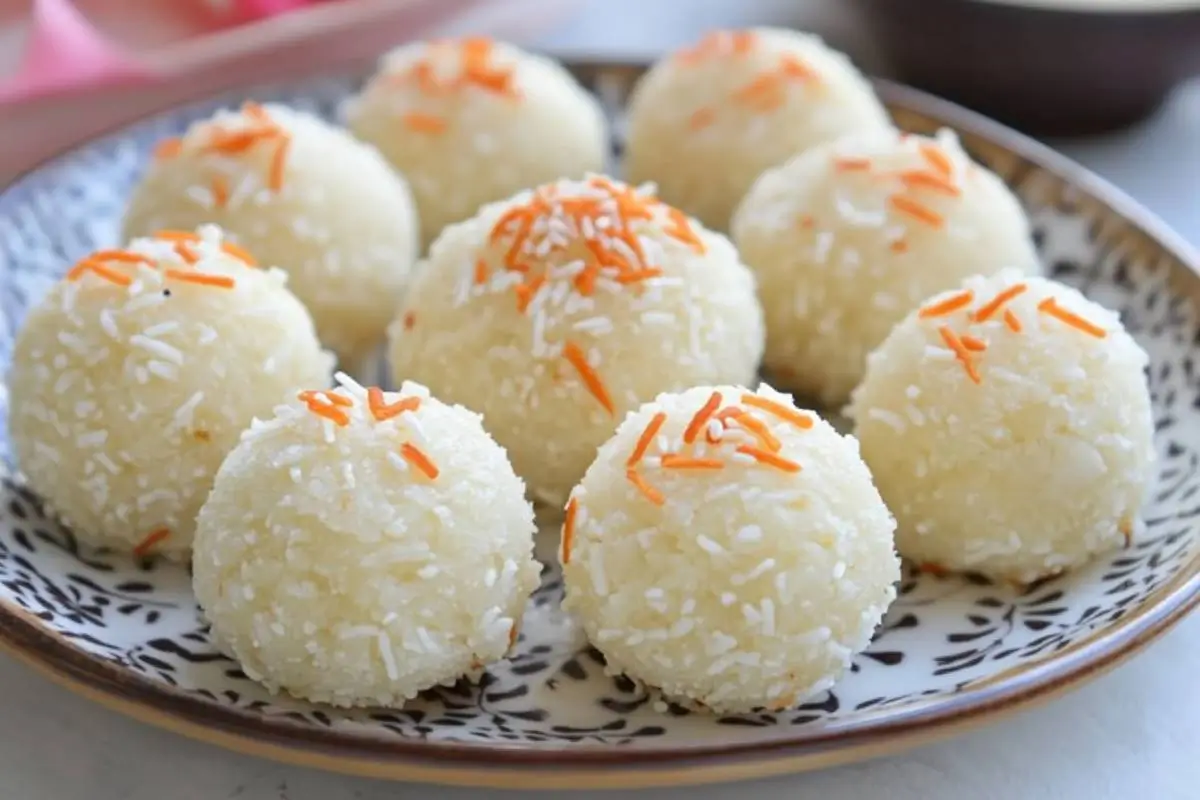
Asian desserts like mochi and bubble tea are amazing treats.
They are known for their chewy texture. These treats are loved for their various flavors and eye-catching looks.
People around the world enjoy mochi and bubble tea. They have a special place in the hearts of those who love desserts.
The Delightful Chewy Texture of Mochi
Mochi is a key dessert in Asia. It's made with glutinous rice flour, which gives it its chewy texture. You can find mochi stuffed with different tasty fillings. Some fillings include sweetened red bean paste or ice cream.
Making mochi at home is doable. A simple recipe needs 150g of glutinous rice flour, 48g of sugar, and some cooking to get elastic dough.
Bubble Tea: A Refreshing and Trendy Treat
Bubble tea started in Taiwan in the late 1980s. It's now loved all over the world. The drink mixes creamy milk tea with chewy tapioca pearls.
This creates an interesting mix of textures. Making brown sugar boba at home is easy. You need just 1/3 cup of instant boba and some brown sugar. Today, bubble tea shops offer many different versions of this drink. It's become a trendy choice for dessert lovers.
Sweet Sticky Rice and Lychee Desserts
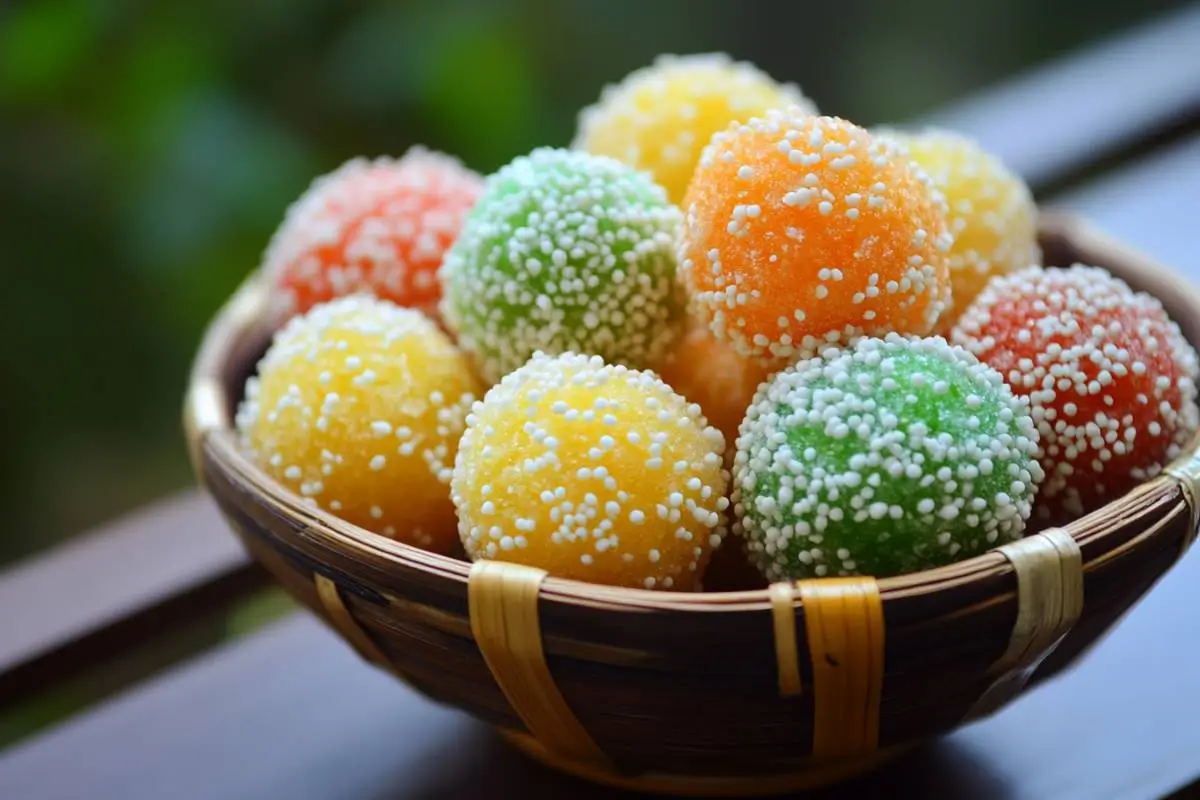
Sweet sticky rice and lychee desserts are standout Asian treats. They mix delightful flavors and textures. Sweet sticky rice is known for its sticky quality. It's an ideal base for many toppings.
To make it, soak 2 cups of Thai rice. Cook it with coconut milk and add cane sugar. Pandan leaves boost the aroma, adding a unique taste to the dish.
Sweet sticky rice pairs well with lychee desserts. For a summer treat, try it with mango. Or, make a Strawberry-Lychee Sago. It's a mix of strawberries and lychee that's both tasty and low-fat.
Adding canned lychees makes preparation easier. Choose lychees with bright red peels for the best taste. These desserts can be served warm or cold, fitting any occasion.
Sweet sticky rice and lychee desserts showcase Asia's culinary art. Their blend of textures and tastes is truly unforgettable. You're sure to love it.
Tropical Delights: Fried Bananas and Coconut Desserts
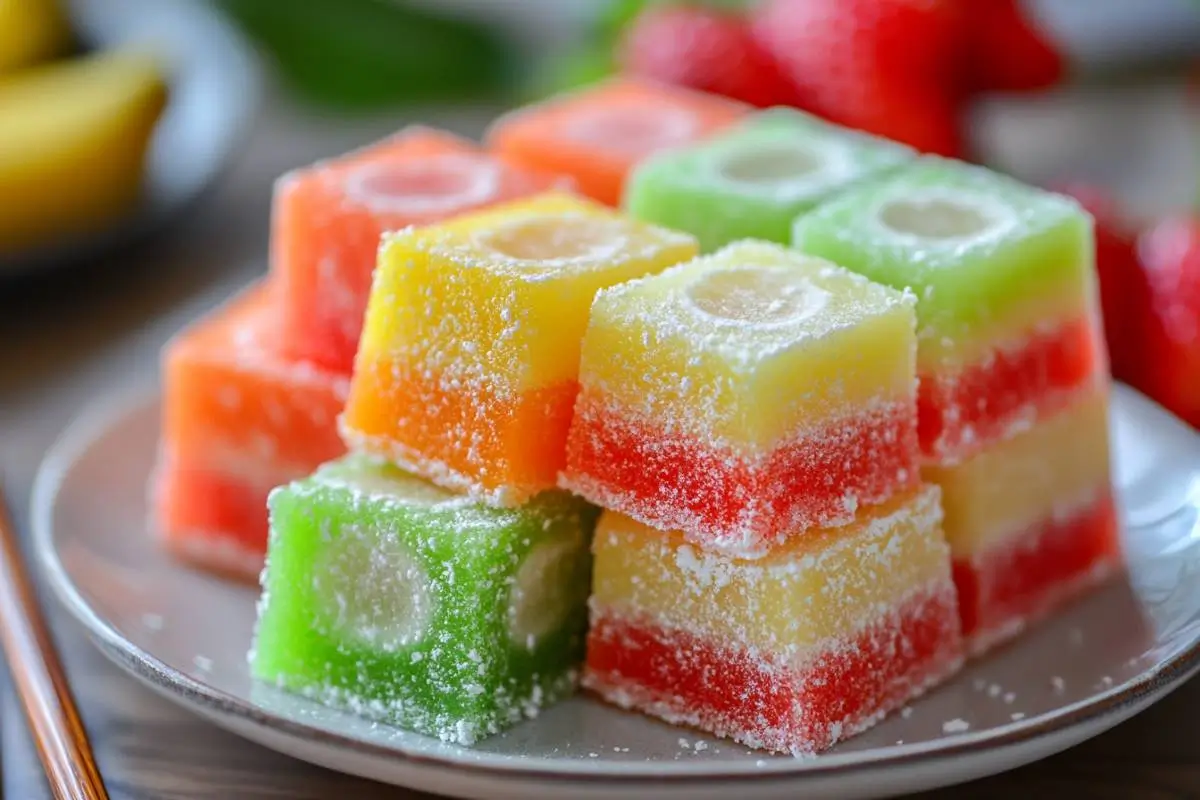
Fried bananas and coconut desserts offer a delightful tropical taste. They bring the essence of Southeast Asian street food right to your plate. The crispy outside and smooth inside of these treats provide a cozy feeling. Enjoyed as a snack or dessert, they promise an unforgettable taste journey.
Crispy Fried Bananas: A Taste of Paradise
In Southeast Asia, particularly Thailand, fried bananas are a dessert staple. They're made with regular or mini sweet bananas. The secret to their crispy texture is rice flour, creating the perfect batter. This dish is a favorite at gatherings, considered a "healthy" fried choice.
Banana pieces are fried after being coated in a special mix. This mix includes all-purpose flour, cornstarch, baking soda, and shredded unsweetened coconut. They're fried until golden, which takes about a minute per side. Topped with ice cream or coconut flakes, they offer a burst of tropical flavor.
Coconut Desserts: Refreshing and Indulgent
Coconut desserts are the perfect match for crispy bananas. Their creamy taste completes the tropical experience. With treats like coconut rice cakes and puddings, the flavor possibilities are endless.
These desserts are perfect for celebrations, bringing joy and togetherness to any event.
Dish | Main Ingredients | Serving Suggestions |
|---|---|---|
Fried Bananas | Bananas, rice flour, shredded coconut sunflower oil | With coconut or vanilla ice cream |
Coconut Rice Cake | Coconut milk, rice flour, sugar | Chilled or warm |
Coconut Pudding | Coconut milk, gelatin, sugar | Chilled with fruit toppings |
Bingsu: The Icy Delight of Korean Desserts
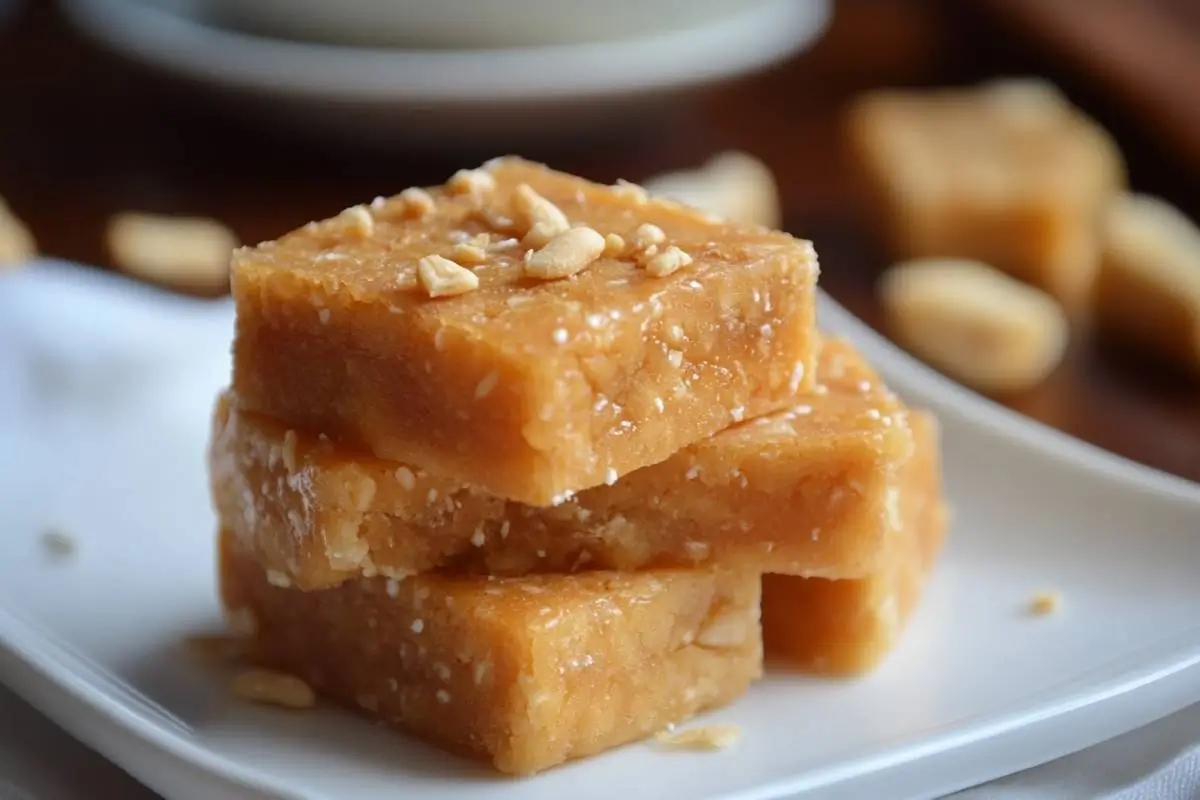
Welcome to the world of bingsu, a cool treat loved by many. It comes from Korea and has a long past. Kings and queens enjoyed it back in the Joseon dynasty days.
Now, it's a favorite during Korea's hot summers.
The variety of bingsu is amazing. The classic kind, patbingsu, has sweet red bean paste on ice. We now see versions with oreo, mango, and green tea flavors.
Each kind has special toppings that make it even better.
Some favorite toppings include:
Now, milk shaved ice is becoming very popular. It's creamy and goes well with any topping. This lets everyone make their bingsu just how they like it.
A cool thing about patbingsu is the many how-to videos online. One by Maangchi is very popular.
If you're making bingsu, you might use:
Ingredient | Purpose |
|---|---|
Brown sugar | Sweetener |
Glutinous rice flour | For chewy texture |
Injeolmi | Traditional rice cake |
Sweet red beans | Main topping |
Shaved ice | Base ingredient |
Sweetened condensed milk | Drizzle for richness |
Every bite of bingsu is a taste of Korean culture and cooking. You can stick with classic types or try new mixes.
Enjoying Korean desserts like bingsu is about more than just eating. It's about enjoying flavors, being creative, and making memories.
Discovering the Sweet Side of Asia
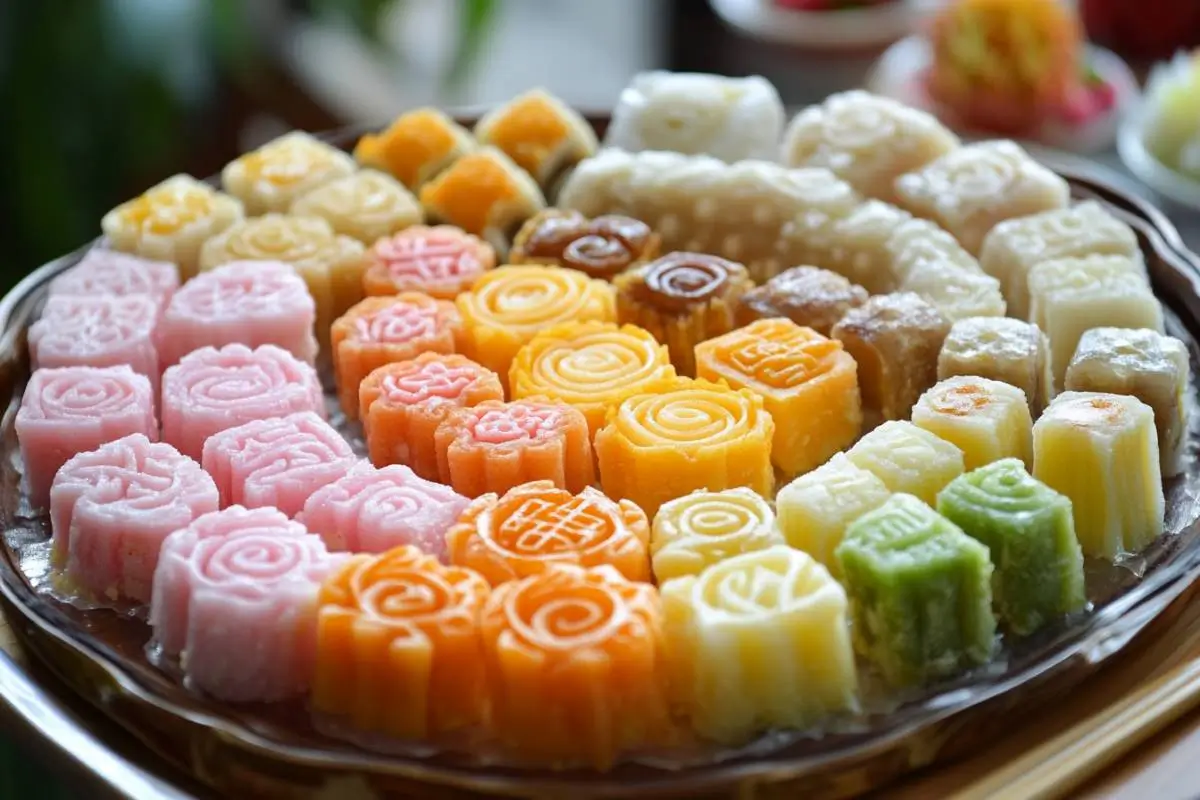
Exploring the sweet side of Asia, you'll find amazing desserts that highlight the region's food culture.
Each one tells its own story through traditional flavors and innovative cooking. For example, halo-halo blends shaved ice, ice cream, and various toppings like jellies and fruits into a unique experience.
In the Philippines, purple yam or ube makes desserts unforgettable with its natural sweetness. Then there's Japanese mochi, with its many fillings, such as the popular mochi ice cream. This dessert has won hearts worldwide.
Looking for something with a kick? Ginger balls might be your pick. They're spicy and bold. Meanwhile, nata de coco offers a jelly-like treat that's sweet and satisfying. It's a common addition to fruit salads.
Also, don't miss trying khaman, a savory steamed cake from Gujarat, India. It's a perfect contrast to sweets.
Asian desserts are incredibly diverse and creative. They range from South Asian mithai to unique festival sweets.
Each one enriches the Asian food culture. They invite you to dive into this sweet culinary adventure.
Conclusion
Asian desserts offer a world of flavors, each with its own story. You'll find everything from the creamy kheer to chewy mochi. These sweets show off Asia's rich culture and creativity in cooking. In the U.S., mochi is becoming more popular and is expected to grow in popularity.
New treats like hotteok, a Korean sweet pancake, are winning hearts. They might make up over 70% of sales in some places. Trying these desserts lets you enjoy amazing flavors. Plus, you learn about the stories behind them.
Start your dessert adventure at Foodland for top-notch Asian ingredients. Whether you stick to traditional recipes or try something new, you're in for a treat. Every bite will be an exciting discovery.
FAQs
Don't miss out on mango pudding, mochi, bubble tea, and bingsu. They're a taste of Asia's sweet variety.
Start with the basics: get the right ingredients. For mochi, you'll need sticky rice. For mango pudding, get mangoes. Look online or in cookbooks for detailed steps.
Yes, there's plenty for vegans! Try mango sticky rice or bubur ketan hitam. Vegan bubble tea is also a hit, with plant-based milk.
Look for coconut milk, sticky rice, red beans, and tapioca pearls. These make the distinct flavors and textures of Asian desserts.
Desserts like mochi have special meanings. They're made for Japan's Mochi Festival, bringing good luck and unity to communities.

